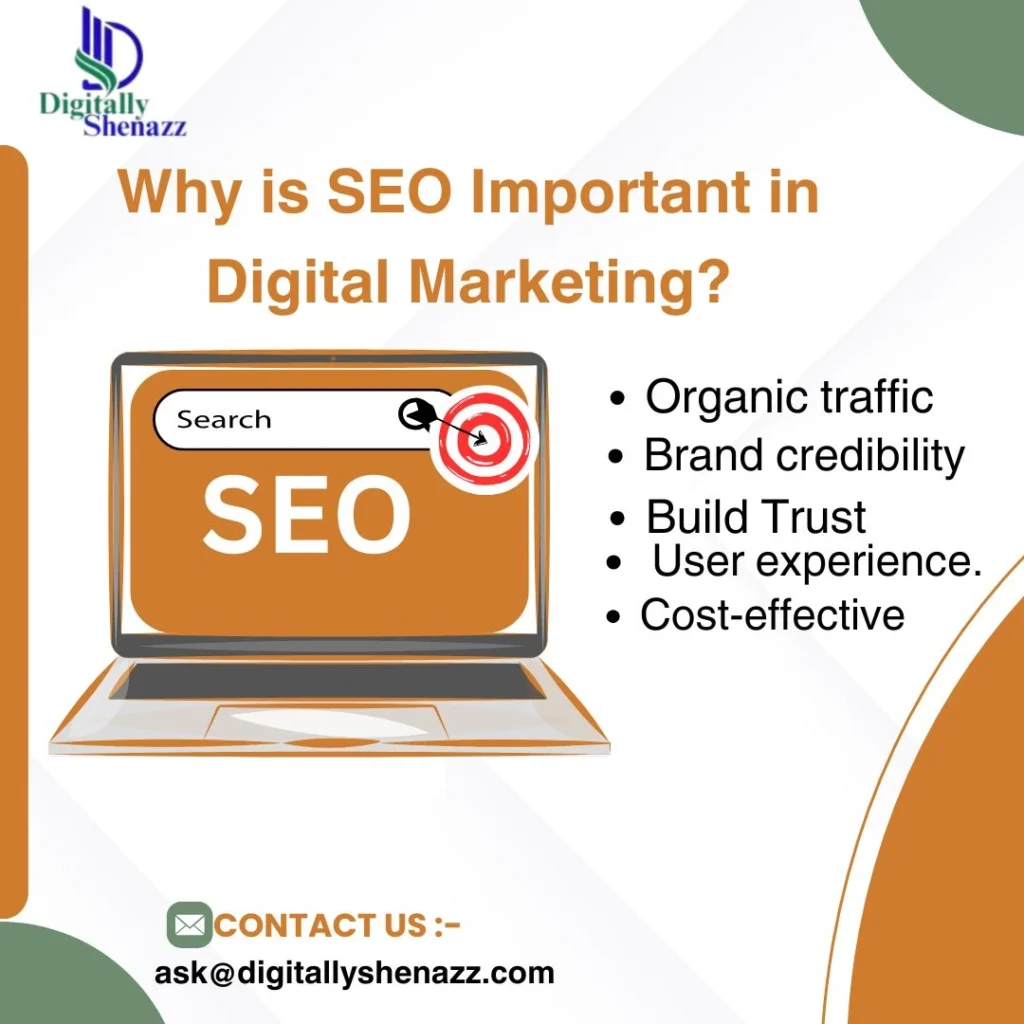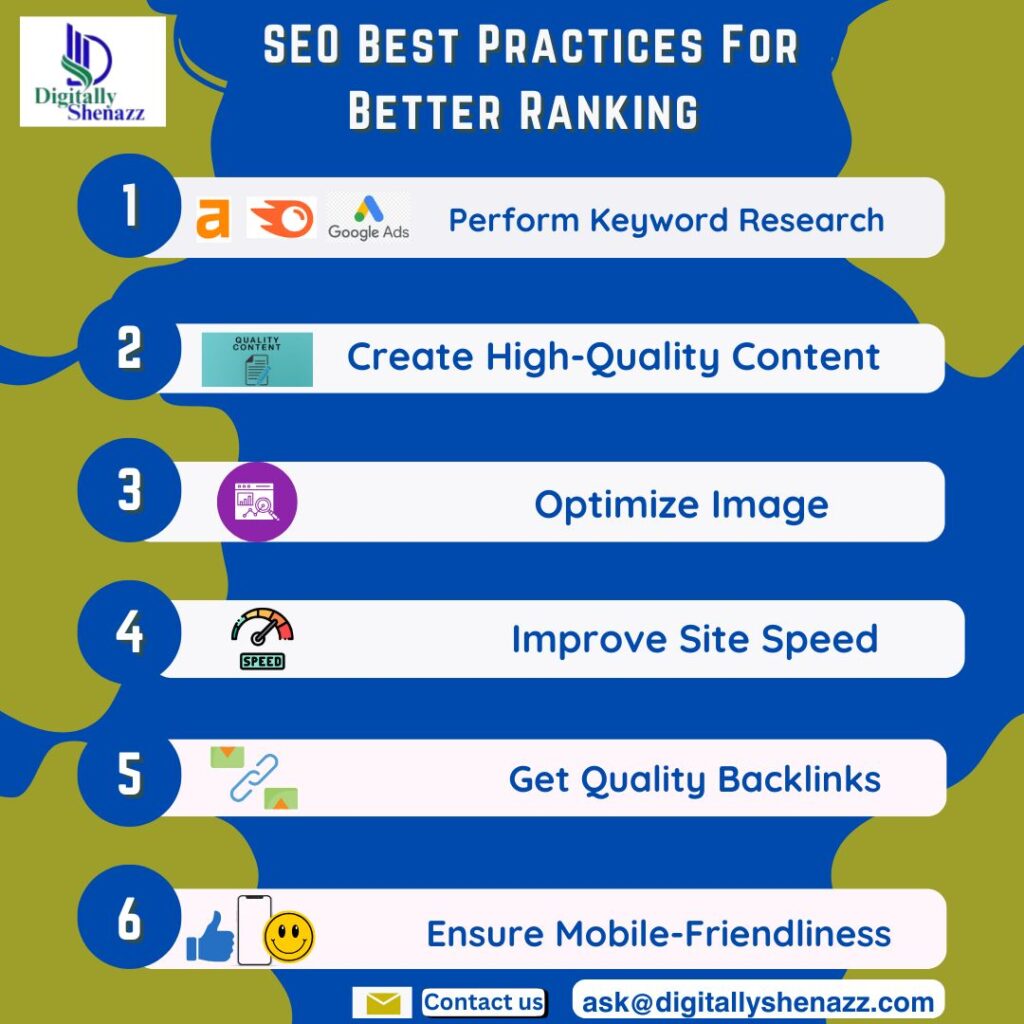In today’s digital world, businesses rely on the internet to attract customers, generate leads, and increase sales. One essential strategy that helps businesses succeed online is Search Engine Optimization (SEO). But what is SEO? Search engine optimization in digital marketing plays a crucial role in making a website more visible to users who are searching for relevant products or services. Without SEO, even the best websites can remain hidden from potential customers.

Understanding SEO in Digital Marketing
SEO stands for Search Engine Optimization, which is the process of improving a website’s ranking on search engines like Google, Bing, and Yahoo. The higher a website ranks, the more likely it is to receive organic (free) traffic. SEO involves a variety of strategies and techniques that help search engines understand and prioritize a website in search results.
Businesses use SEO to attract more visitors, increase brand awareness, and improve online credibility. In a highly competitive digital space, SEO is a vital tool for success.
Key Components of Search Engine Optimization
To answer the question, what is SEO? Search Engine Optimization in Digital Marketing, we need to look at its main components:
1. On-Page SEO
On-page SEO involves optimizing elements within a website to improve its ranking. Some important on-page SEO factors include:
- Keyword Research: Finding the right keywords that people use when searching online.
- Content Optimization: Writing high-quality, relevant content that provides value to users.
- Title Tags & Meta Descriptions: Crafting compelling headlines and descriptions for search engines.
- URL Structure: Creating short, descriptive URLs that include relevant keywords.
- Internal Linking: Connecting different pages within the website to improve navigation and SEO value.
2. Off-Page SEO
Off-page SEO includes actions taken outside of a website to improve its ranking. These activities help build credibility and authority. Key off-page SEO strategies include:
- Backlink Building: Earning links from reputable websites to increase trustworthiness.
- Social Media Engagement: Sharing content on platforms like Facebook, Instagram, and LinkedIn to drive traffic.
- Guest Posting: Creating content for external websites to increase visibility and earn valuable backlinks.
3. Technical SEO
Technical SEO focuses on improving a website’s structure and backend to make it easier for search engines to crawl and index. Important technical SEO factors include:
- Site Speed: Ensuring the website loads quickly for a better user experience.
- Mobile Optimization: Making sure the website is mobile-friendly.
- Secure Connection (HTTPS): Using SSL certificates to improve security.
- XML Sitemaps: Helping search engines understand and navigate the website’s structure.
Why is SEO Important in Digital Marketing?
SEO plays a significant role in digital marketing because it helps businesses grow organically. Here’s why SEO is essential.

1. Increased Visibility & Traffic
SEO ensures a website ranks higher on search engines, making it easier for potential customers to find the business online.
2. Builds Trust & Credibility
Websites that appear on the first page of search results are perceived as more trustworthy and authoritative.
3. Cost-Effective Marketing Strategy
Unlike paid advertisements, SEO focuses on long-term growth, bringing continuous traffic without ongoing expenses.
4. Improves User Experience
SEO encourages businesses to create user-friendly websites, which improves customer satisfaction and engagement.
Search Engine Optimization Best Practices for Better Ranking

- Perform Keyword Research—Use tools like Ahrefs, SEMrush, or Google Keyword Planner to find relevant and high-traffic keywords.
- Create High-Quality Content—Focus on value-driven articles.
- Optimize Images—Compress images and use alt text with keywords for better accessibility and SEO.
- Improve Site Speed—Reduce loading times.
- Get Quality Backlinks—Build relationships with authoritative sites.
- Ensure Mobile-Friendliness – Google prioritizes mobile-optimized sites.
Search Engine Optimization Trends in 2025
The world of SEO is always evolving. Some of the latest trends include:
- Voice Search Optimization: More people use voice assistants like Alexa and Siri to search online.
- AI and Machine Learning: Search engines are using AI to provide better search results.
- Video SEO: Optimizing videos for search engines to attract more viewers.
- Core Web Vitals: Ensuring websites meet Google’s performance and user experience standards.
Conclusion
So, what is SEO? Search engine optimization in digital marketing is a powerful strategy that helps businesses grow by improving their online visibility. By using on-page, off-page, and technical SEO, companies can attract more visitors, build credibility, and achieve long-term success in the digital world. Understanding SEO in digital marketing is crucial for any business looking to thrive online.